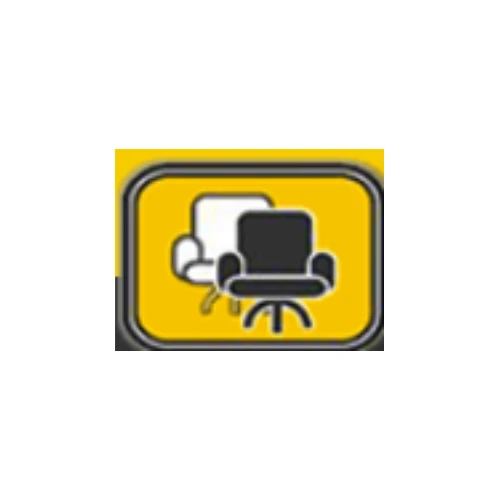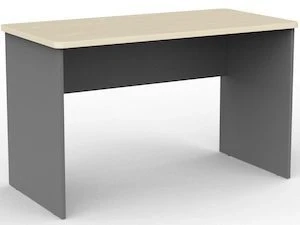Choosing the right office desk is one of the most important investments you can make for your productivity, posture, and workspace aesthetics. Whether you’re outfitting a corporate office or setting up a home workstation, the desk you select sets the tone for your entire workday. From materials and size to features and design, there’s a lot to consider before clicking “Buy.”
This comprehensive buying guide breaks down everything you need to know to choose the best office desk for your needs, style, and budget.
1. Assess Your Workspace Needs
Start by asking yourself: What will this desk be used for? Your daily tasks will influence the kind of desk you need.
- Basic computer work? A compact desk with space for a monitor and keyboard may be enough.
- Multiple monitors, printers, or extra equipment? You’ll need something larger with cable management and additional surface area.
- Paperwork or creative work? Desks with large flat surfaces and built-in drawers will be ideal.
- Frequent video calls? Consider backdrops and desk depth for optimal camera angles.
Understanding your workflow ensures you don’t get a desk that’s either overkill or inadequate.
2. Measure Your Space
Before browsing, measure the room where your desk will go. Consider:
- Desk dimensions: Height, width, and depth. Don’t just guess—use a tape measure.
- Walking space: Leave at least 2–3 feet behind the chair for comfortable movement.
- Other furniture: Will the desk fit with bookshelves, filing cabinets, or other pieces?
Sketch the room layout if needed, and decide whether a straight desk, corner desk, or L-shaped configuration fits best.
3. Choose the Right Desk Type
There are several types of office desks, and each serves a unique purpose.
- Standard Desks: Simple and versatile, these are suitable for most tasks and come in a variety of sizes.
- L-Shaped Desks: Great for multitaskers who need to separate computer and writing space.
- U-Shaped Desks: Provide maximum surface area, ideal for executive offices or heavy paper-based work.
- Standing Desks: Height-adjustable desks allow you to alternate between sitting and standing, which is great for health and energy.
- Wall-Mounted or Floating Desks: Space-saving and stylish, perfect for small rooms or minimalist setups.
- Credenza Desks: Combine work surfaces with storage, usually found in more formal or executive settings.
Match the desk type to your workflow and room layout.
4. Consider Desk Material
Material affects durability, appearance, and price.
- Wood Desks: Classic and sturdy, wood adds a timeless look. Solid wood is premium, while MDF or particleboard with wood veneer is more affordable.
- Metal Desks: Sleek, modern, and strong—perfect for minimalist or industrial aesthetics. These are usually paired with glass or laminate tops.
- Glass Desks: Stylish and modern, but require more maintenance and care. Not ideal if you tend to keep clutter or use a lot of equipment.
- Laminate Desks: Budget-friendly and available in many styles. Laminate is resistant to scratches and stains but less durable than real wood.
Choose the material based on durability, office decor, and maintenance preferences.
5. Storage and Organization Options
An organized workspace is a productive workspace. Look for desks with built-in storage if you need:
- Drawers for supplies
- Filing cabinets for documents
- Shelves for books or personal items
- Cable management features
Minimalist desks with no storage are better for clean, modern looks, but may require additional storage units.
6. Ergonomics and Comfort
Comfort should never be compromised, especially if you’re spending 8+ hours at your desk.
- Height: The standard desk height is about 29–30 inches. Make sure your chair fits comfortably and your arms can rest at a 90-degree angle while typing.
- Legroom: Avoid desks with drawers or shelves in the middle that limit leg movement.
- Monitor Placement: Ideally, your monitor should be at eye level. Consider desks with monitor stands or risers.
- Standing Desk Ergonomics: Choose a model that adjusts smoothly and allows a wide range of height customization.
If possible, test a desk in person to see how it feels before buying online.
7. Aesthetic and Style
Your desk should reflect your style and fit with your office decor. Whether you want a traditional wooden executive desk or a modern white and chrome setup, think about how the desk will blend in with the rest of the room.
Popular styles include:
- Modern/Minimalist: Clean lines, neutral tones, often metal or laminate.
- Rustic/Farmhouse: Reclaimed wood, chunky legs, natural finishes.
- Industrial: Metal frames, exposed bolts, dark wood.
- Traditional: Rich woods, ornate design, built-in cabinets.
Let your personal taste guide you, but also consider how a professional or clean setup can help boost your focus.
8. Assembly and Maintenance
Some desks arrive fully assembled, while others require some work.
- Check product reviews to see how easy or difficult the assembly is.
- Look for desks with pre-drilled holes and clear instructions.
- Maintenance depends on the material. Glass requires more cleaning; wood may need polishing.
If you're not handy or don’t want to spend time building furniture, pay attention to these details before you buy.
9. Budget Considerations
Office desks range from under $100 to over $1000 depending on features, size, and material.
- Under $200: Basic laminate desks or small minimalist designs.
- $200–$500: Mid-range desks with storage, better materials, or L-shaped designs.
- $500+: Executive, standing, or designer desks with premium finishes and features.
Set a realistic budget and prioritize features that matter most for your work and space.
10. Durability and Warranty
A good office desk should last several years. Look for:
- Solid construction: Reinforced frames, strong joints, and thick surfaces.
- Quality reviews: What do real users say after 6 months or a year of use?
- Manufacturer warranty: A solid warranty shows the company stands behind its product.
Higher upfront investment often means better quality and longer life—so consider it a long-term purchase.
Conclusion
Choosing the right office desk is about much more than picking the nicest design or the cheapest option. It’s about aligning function, comfort, and style with your daily work habits. Whether you need a minimalist space for a laptop or a sprawling desk for multitasking, taking the time to evaluate your needs will help you avoid regret and get the most out of your investment.
Measure your space, understand your tasks, think long-term, and choose a desk that will support your productivity and comfort for years to come.


